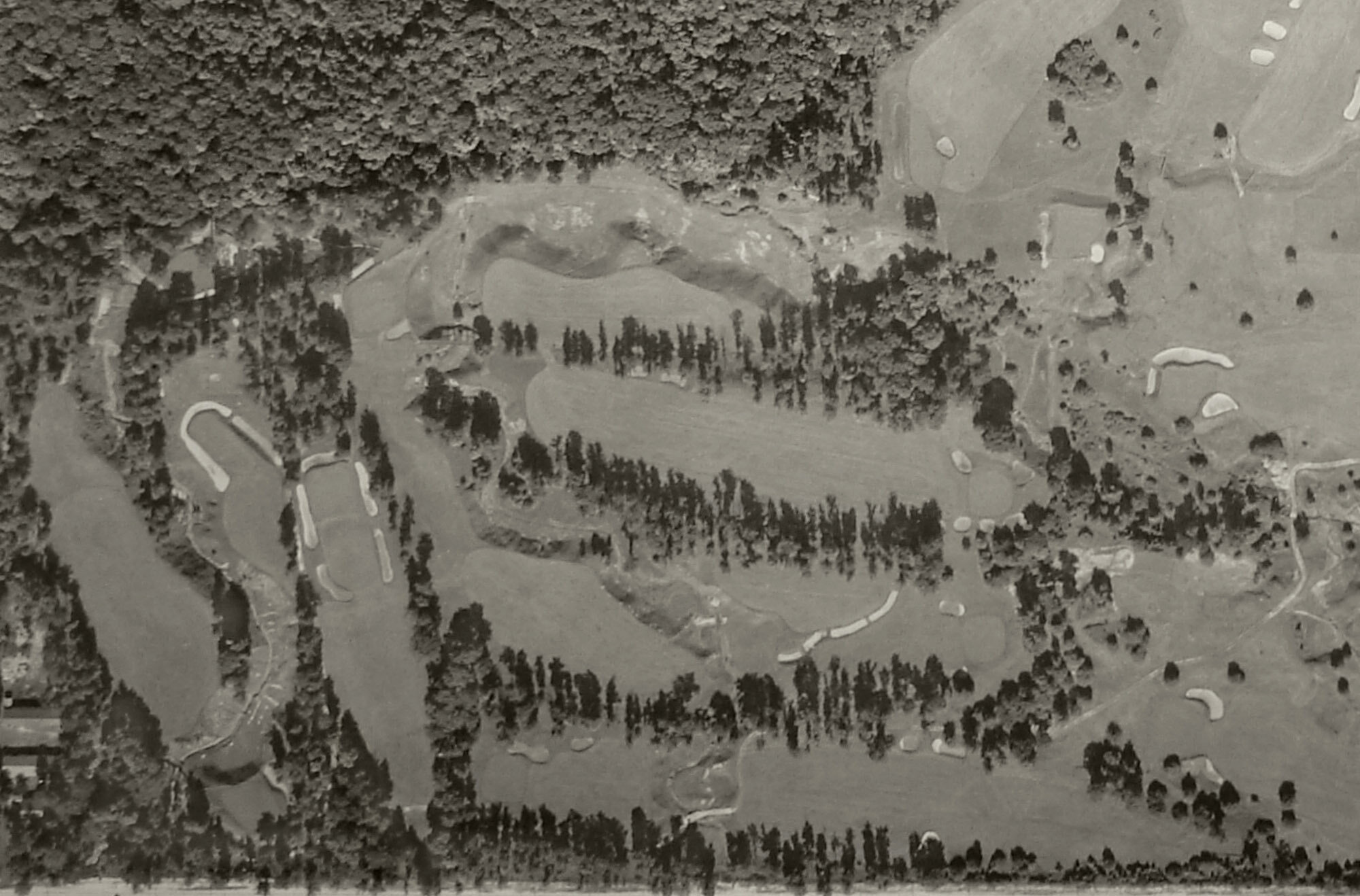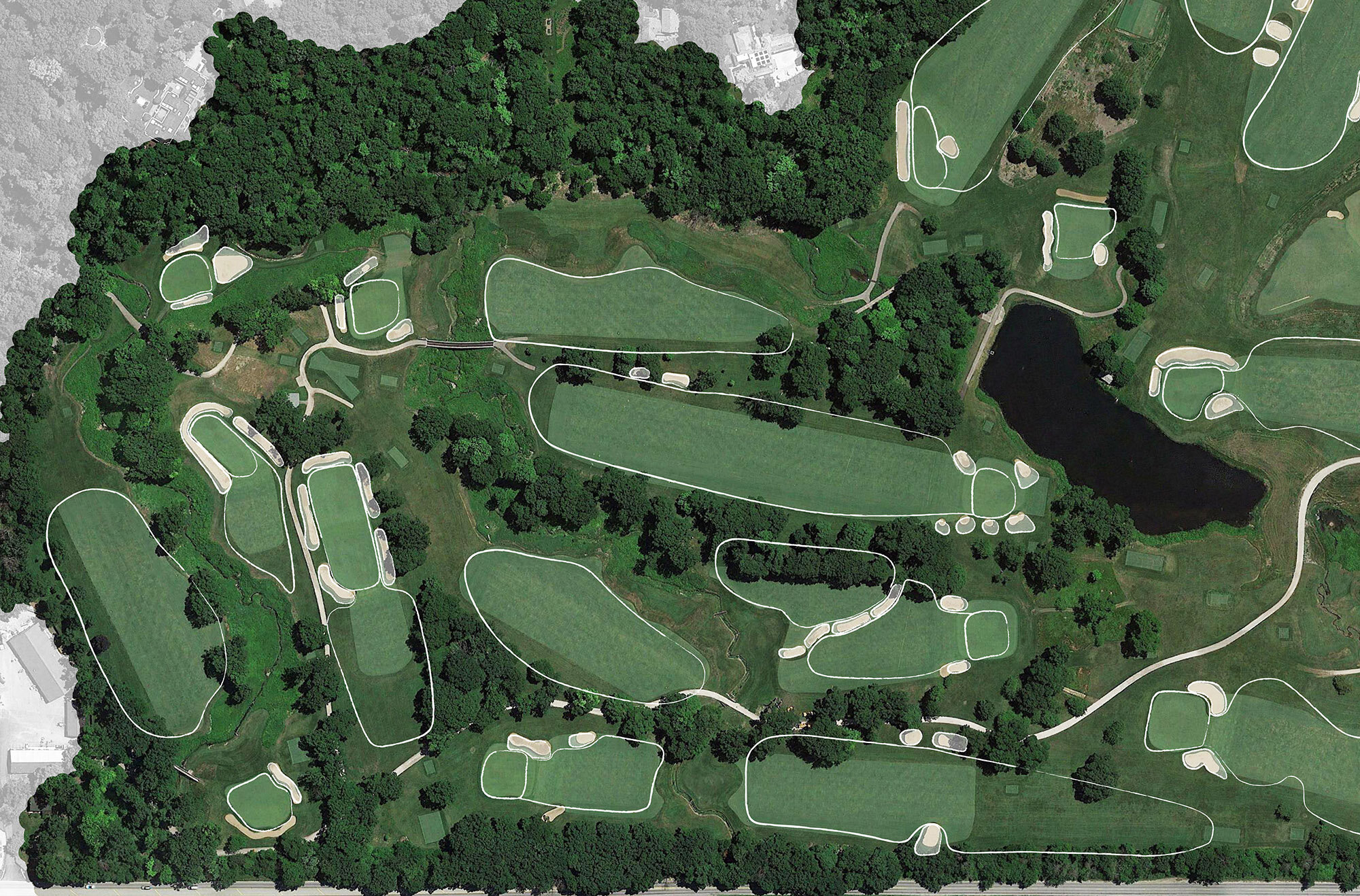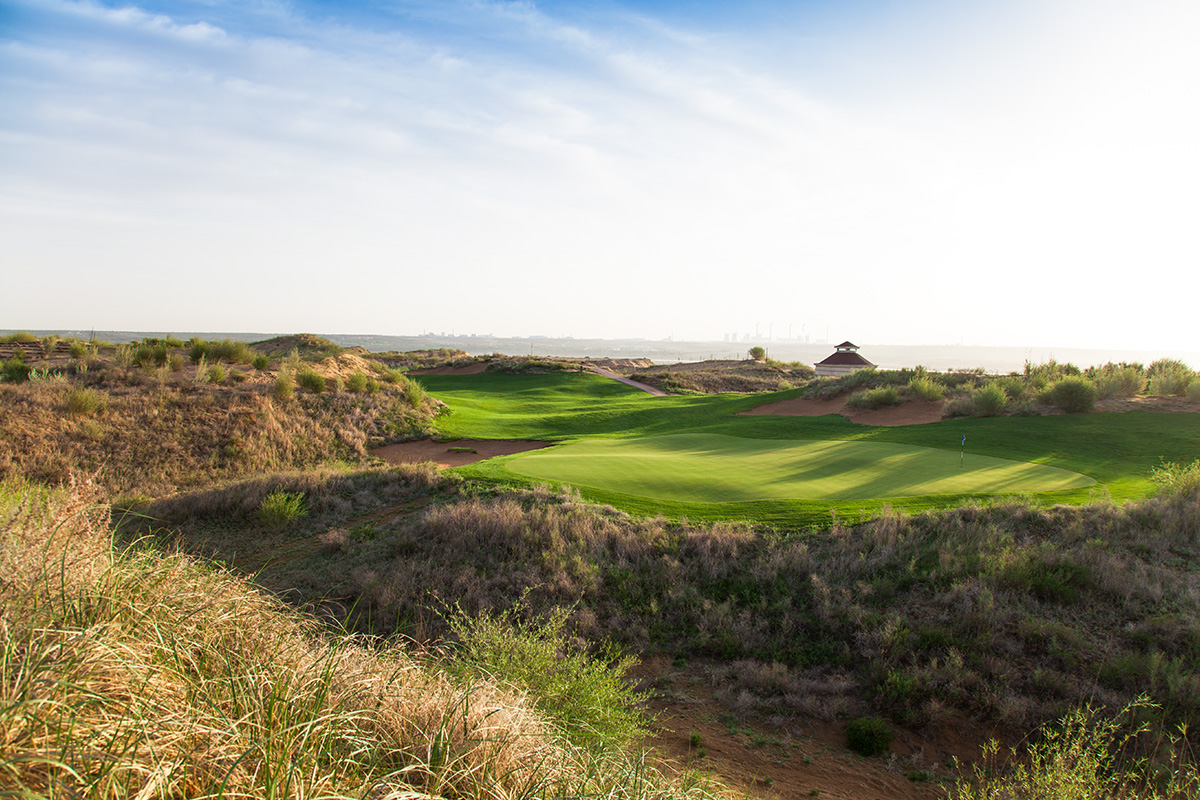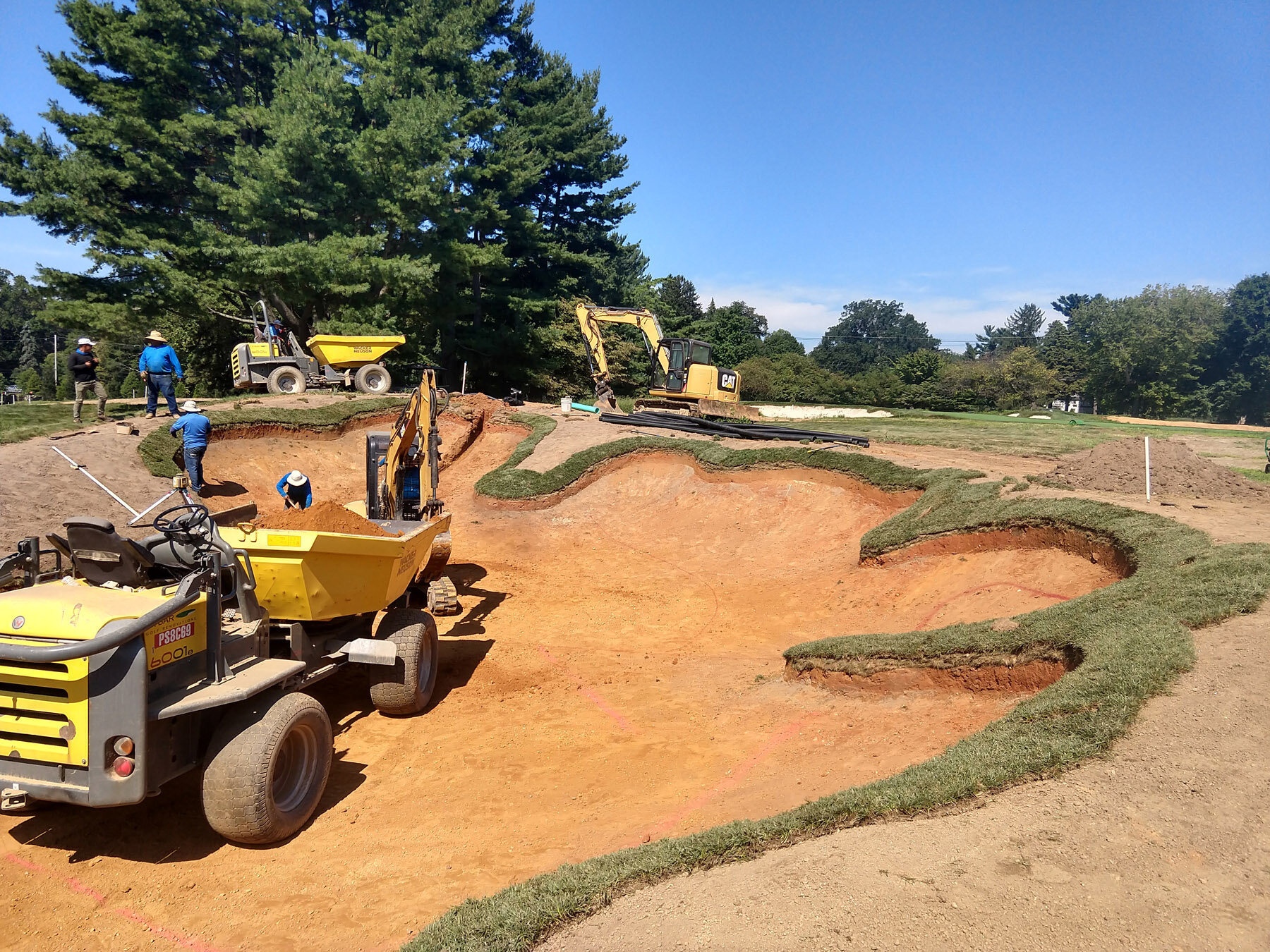Design/Build
Please check out all of Farrow Golf’s design/build services as well as historical analysis for existing golf courses below.
Design Introduction
Ryan Farrow has been a part of the golf business for over 15 years and was involved in the design, planning, supervision, or shaping of over 25 golf courses throughout the United States and Asia. Ryan received his start in the design businesses as an intern on Tom Doak's construction crew at Rock Creek Cattle Company and spent additional time gaining office experience under John Fought, all while finishing his degree at Arizona State University. Upon graduation, Ryan accepted a Design Associate position at Schmidt-Curley Design where he worked from 2008-2014. During his time in Asia, Ryan lived in China for over 5 years, acting as Schmidt-Curley's "eyes and ears on the ground" for the construction of a 10 golf course resort (Mission Hills Hainan). In his years working for Schmidt-Curley, Ryan has not only learned the technical aspect of creating plan documents on the computer, but possesses the ability to produce all phases of construction documents necessary for building a golf course in the modern age.
Dalu Dunes | A Case Study
Tee shot of the 17th Hole at Dalu Dunes Golf Club
In 2014 Ryan Farrow completed his first golf course design as Lead Designer on the Dalu Dunes Golf Course along with Lee Schmidt (Principal of Schmidt-Curley Design). Ryan and Lee worked together on the planning, design, and supervision of Dalu Dunes in Inner Mongolia, China. The golf course sits on a vast stretch of dunes-land at the edge of the Gobi Desert and represented a once in a lifetime opportunity to build a transformative golf course on an ideal, inland links. The site lay on pure sand with dunes stretching as high as 20 meters tall, complete with gale force winds during the spring and fall months.
"The primary focus was on creating a fun, playable golf experience while trying not to "dictate" strategy. We looked for a great variety of green sites and tee locations to provide the golfer with an unlimited set of options to play each hole based on the days pin position and wind direction. We preserved, and at times accentuated fairway contouring, forcing golfers to play from a variety of uphill, downhill, and side hill lies instead of relying on a heavy bunkering scheme in an attempt to add difficulty. What we created is one of the most rugged, naturally beautiful courses in China which we hope will introduce the local and national golfing population to the beauty and enjoyment of playing links golf." - Ryan Farrow
Master Plan
Photo Gallery
Routing Development
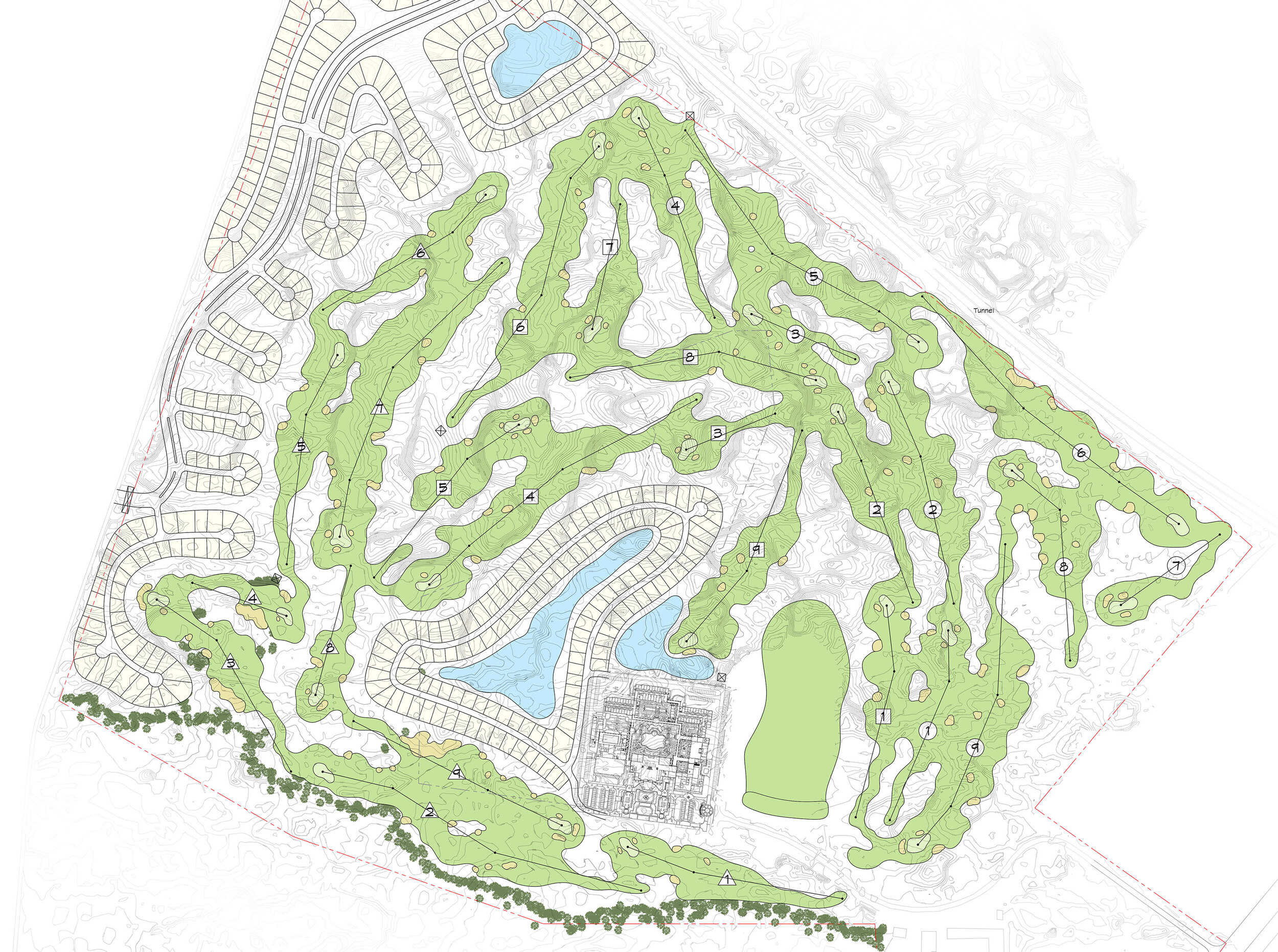
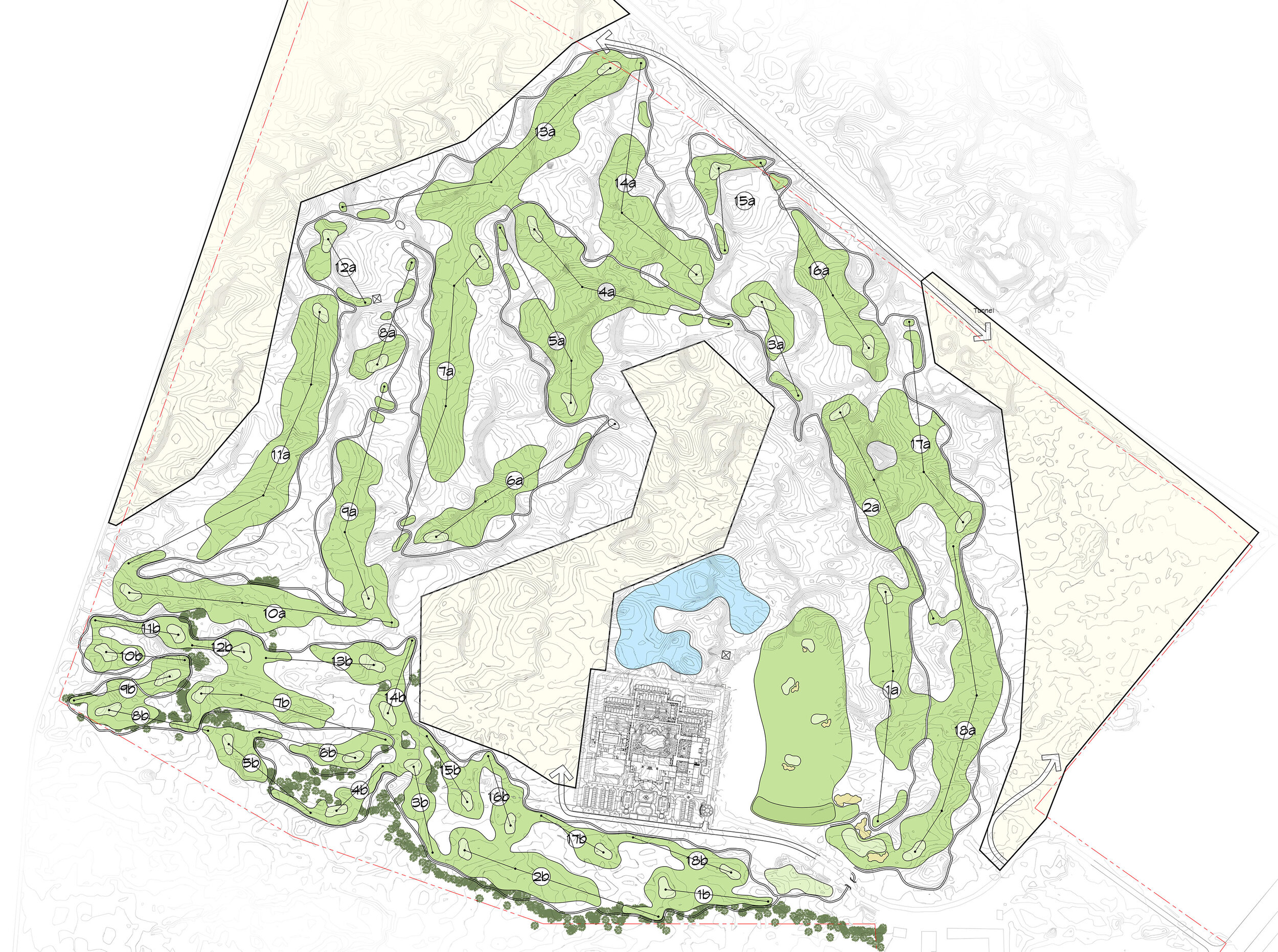
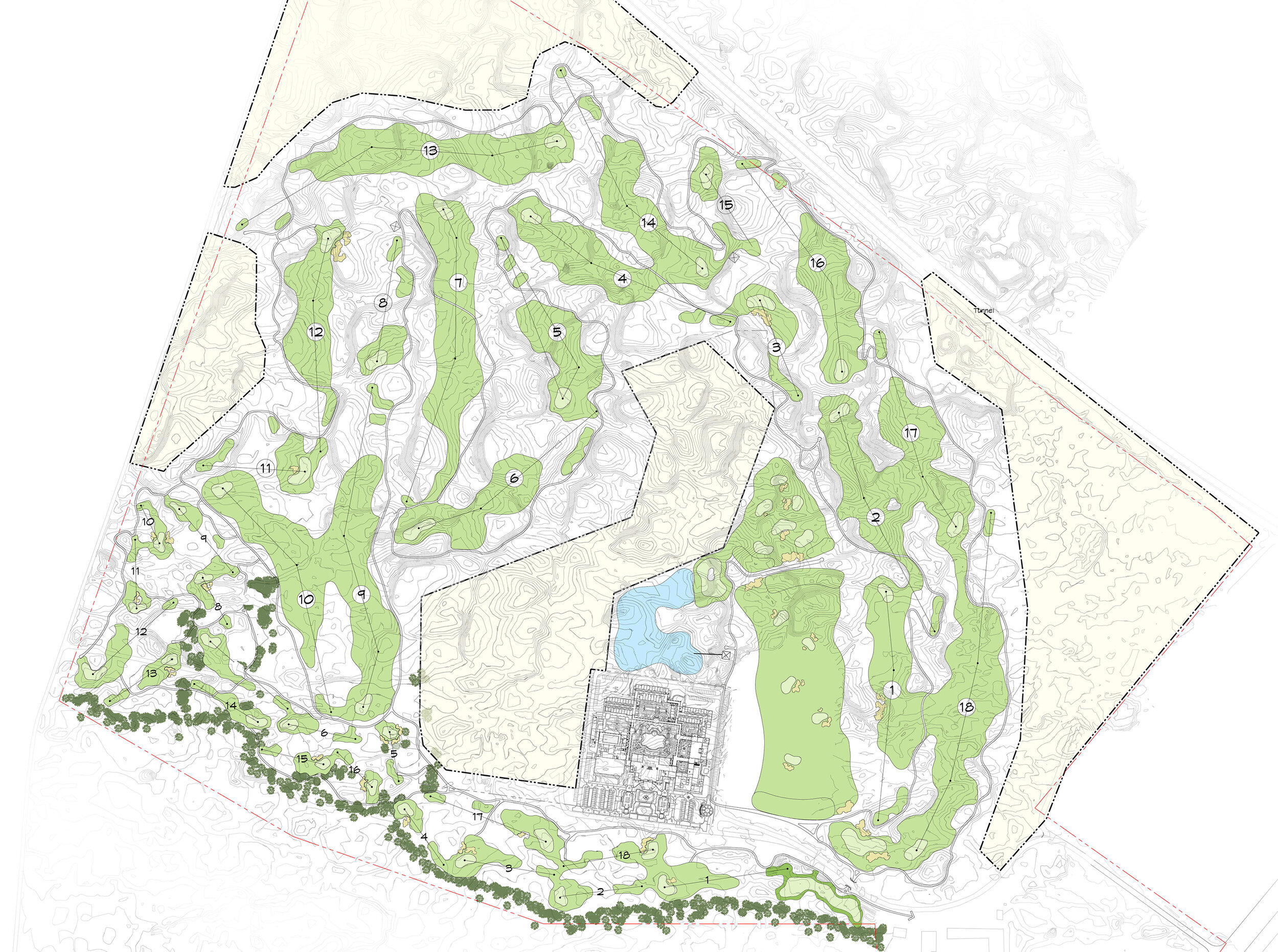
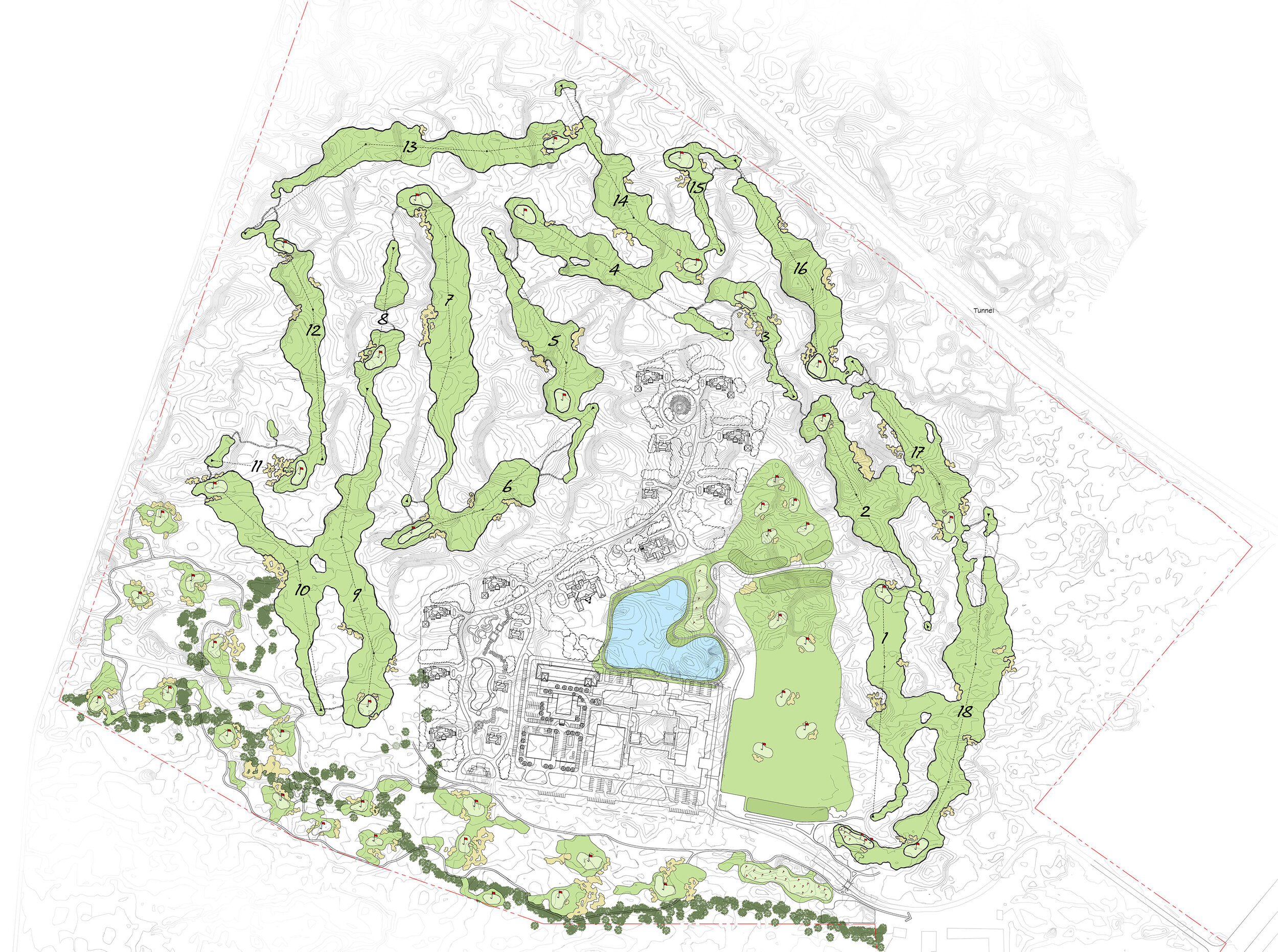
Shaping / Field Work
"Whether it was staying on top of a 10 course project on volcanic rock, leading a bunker crew of local villagers in China, or overseeing my first design from the ground up, there is no greater joy than being on the seat of a bulldozer or putting the finishing touches on a bunker edge with a shovel and rake." - Ryan Farrow
Ryan Farrow first stepped foot on a construction site while interning for Tom Doak at Rock Creek Cattle Company in 2007. During that time, he learned the basics of golf course construction by shaping tee boxes and bunkers and learning from some of the most talented shapers and project managers in the world. Since then, he has helped oversee various stages of design, planning, or construction of golf courses throughout the United States and Asia working at resort courses like Mission Hills, Sand Valley, Pinehurst Resort, and Bandon Dunes as well as private golf clubs like Oakmont Country Club, Merion, and Southern Hills. Ryan is currently shaping for Coore & Crenshaw Design.
Ryan has shaped bunkers, greens, tees, mounds, or stream banks on the following courses:
Rock Creek Cattle Company (2007)
Sand Valley Golf Resort (2015-2016)
Farmington Country Club (2016)
The Sandbox (Par 3 Course) At Sand Valley (2017)
Ozark National @ Big Cedar Lodge (2017)
Pinehurst #4 (2018)
Merion Golf Club (2018)
Southern Hills Country Club (2018)
Oakmont Country Club (2018)
The Sheep Ranch - Bandon, OR (2019)
Shaping Gallery
*click on above images to expand
Historical Analysis
At Farrow Golf Design, we believe in preserving the work of golf’s great architects and provide services to research and document how a golf course used to be so we can accurately restore the games classic courses.
The failure in high profile golf course restorations over the past 20 years occurs when a modern architect thinks he or she knows better than the great architects of years past like Alister Mackenzie, Donald Ross, A.W. Tillinghast, or C.B. Macdonald (to name a few). These architects have built timeless designs that have held their place on the top 100 lists for over a century. Our philosophy on restoring golf courses of the “Golden Age” is not to try and improve the original architects design, but to accurately document the golf course that was built based on historical aerials, plans, and ground level photographs.
This documentation can also help show how the golf course has changed over time, aerial imagery can help track how a golf course has evolved over the years, and can document decade over decade changes that show the changes of greens, tees, fairways and bunker size. We can also see tree plantings over the years to help reclaim original vistas that have become gown over throughout the years. We do not believe in the wholesale removal of trees and approach each project with the mindset of restoring a golf course as close as possible to the architects original intent.
Periodical & Archival Research
Analysis of Original Architect’s Blueprints
Historic Aerial Overlays, Digitization, and Takeoffs
Before/After Photo Renderings
Historic Aerial Overlay Process
